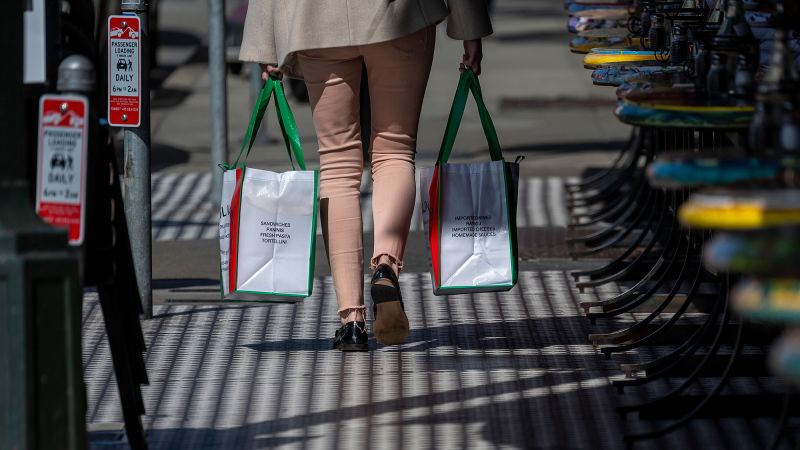The effects of President Donald Trump’s sweeping tariffs on U.S. retail sales are at the forefront of economic discussions, particularly following a remarkable rush by consumers to purchase goods in March. This sudden surge can largely be attributed to consumers trying to avoid anticipated price hikes resulting from the tariffs, which have stirred a heated debate among economists regarding their long-term implications on the economy.
As the Commerce Department prepared to release March retail spending data, economists anxiously awaited insights into how American consumers are responding to ongoing tariff news and broader economic policies. Given that consumer spending is the primary driver of the U.S. economy, constituting roughly a third of overall economic activity, retail sales figures are a critical indicator. A notable uptick in sales for March was expected, particularly for big-ticket items that might see significant price increases due to the tariffs.
In March, Americans were likely motivated to purchase more expensive goods in anticipation of climbing prices resulting from the Trump administration’s import taxes. This behavioral shift could potentially be mirrored in April, as consumers look to mitigate future costs. However, such spikes in purchasing present challenges for comprehending the overall economic situation for many American families. The resultant fluctuations complicate the decision-making process for economic policymakers, particularly the Federal Reserve, which is responsible for maintaining economic stability.
James Knightley, chief international economist at ING, emphasized the difficulties facing the Fed in the wake of these changes. While immediate consumer spending statistics may appear robust, they complicate the Fed’s ability to formulate a strategic response, as the central bank must gauge the economy’s overall health before acting. An estimated increase of 1.3% in retail sales was anticipated for March, marking the most substantial monthly gain since January 2023, reflecting a potentially buoyant economic environment.
A real-time estimate by the Federal Reserve Bank of Chicago complemented these predictions, showing consumer spending on retail and food services, excluding vehicle purchases, was up by 1.2% month-on-month, with inflation adjustments pushing this figure even higher to 1.6%. However, the preceding month of February had indicated disappointing retail growth, with sales only rising by 0.2% after January’s dramatic drop due to severe winter weather conditions.
Despite these temporary spikes in retail sales, consumer sentiment has been dwindling as a result of the Trump administration’s inconsistent trade policy. This downturn in optimism was highlighted in surveys conducted by the University of Michigan among others. While the Federal Reserve remains focused on fostering both employment and price stability, the uncertainty surrounding consumer confidence continues to pose risks for future spending levels, which in turn influences hiring trends and pricing strategies in the economy.
The potential for President Trump’s tariffs to cause inflationary pressures and higher unemployment rates has raised concerns of a stagflation scenario—characterized by stagnant growth coupled with rising prices and unemployment. Chicago Fed President Austan Goolsbee clarified the challenges posed by tariffs, describing them as “negative supply shocks” that exacerbate the central bank’s dual mandate of promoting maximum employment while maintaining stable prices.
To date, Trump has implemented various tariffs, including a 25% tariff on aluminum and steel and 25% on certain goods from Canada and Mexico not compliant with the North American Free Trade Agreement. There are also tariffs against Chinese imports peaking at 145%, with an additional 25% on vehicle imports and separate tariffs on auto parts planned. A substantial tariff increase affecting numerous countries was briefly scheduled for April but was postponed until July, as Trump announced temporary exemptions for specific electronic goods and discussed forthcoming tariffs on industries such as semiconductors, pharmaceuticals, copper, and timber.
In summary, while current retail sales figures may suggest economic strength, the long-term impacts of tariffs on consumer behavior, confidence, and overall U.S. economic conditions remain uncertain. Economists and policymakers alike are thus left to navigate the complexities introduced by these trade policies, looking to balance consumer sentiment with the realities of inflation and growth.



